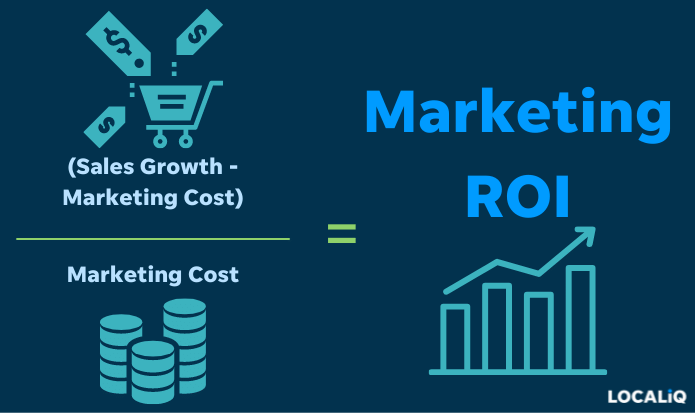Small business owners in Australia face both opportunities and challenges when it comes to growing their businesses. While the internet offers a vast market, competition is fierce. One of the most effective ways to achieve a substantial return on investment (ROI) in marketing is through SEO, or search engine optimisation. Here is how to do it.
Understanding ROI in SEO
Return on investment, or ROI, is a fundamental metric for measuring the effectiveness of any business strategy. In the context of SEO, ROI refers to the value generated from your investment in SEO efforts. This value can take various forms, such as increased website traffic, higher conversion rates, and, ultimately, more revenue.
However, it’s crucial to approach SEO with an ROI-focused mindset, especially for small businesses with limited resources. To achieve a positive ROI from SEO, you need to implement strategies and tactics that deliver tangible results and justify your investment.
1. Set Clear and Measurable Goals
The first step in an ROI-focused SEO strategy is setting clear and measurable goals. Determine what you want to achieve with your SEO efforts. This could include objectives such as:
- Increasing organic website traffic by a certain percentage.
- Improving the conversion rate of your website’s landing pages.
- Boosting online sales or lead generation.
By setting specific goals, you can track your progress and measure the ROI of your SEO initiatives accurately.
2. Conduct Comprehensive Keyword Research
Keyword research is the cornerstone of any successful SEO campaign. For small business owners, understanding the local search landscape is crucial. Identify relevant keywords and search phrases that your potential customers are using to find products or services in your niche. Tools like Google Keyword Planner, SEMrush, or Ahrefs can assist you in finding valuable keywords with reasonable competition levels.
3. Optimise Your Website for Local SEO
Local SEO is particularly essential for small businesses that rely on attracting customers from specific geographic areas in Australia. Here are some local SEO strategies to consider:
- Claim and optimize your Google My Business (GMB) listing.
- Ensure your NAP (Name, Address, Phone Number) information is consistent across all online platforms.
- Encourage customer reviews on your GMB listing and other review sites.
- Create location-specific content to address the needs and interests of your local audience.
Effective local SEO can significantly boost your online visibility within your target geographic area, increasing the likelihood of attracting local customers.
4. Focus on On-Page SEO
On-page SEO involves optimising individual web pages to improve their search engine rankings. Pay attention to the following on-page SEO elements:
- Title tags and meta descriptions: Craft compelling and relevant titles and descriptions that encourage click-throughs.
- Header tags (H1, H2, H3): Use header tags to structure your content and make it more readable.
- Keyword optimisation: Integrate your target keywords naturally into your content.
- Internal linking: Link to other relevant pages on your website to improve user navigation and search engine crawlability.
5. Create High-Quality, Engaging Content
Content quality plays a significant role in SEO and ROI. Small business owners should focus on creating valuable, informative, and engaging content that resonates with their target audience. Australian small business owners should consider producing content that caters to their local customers, addressing specific needs or issues relevant to the Australian market.
6. Invest in Website Speed and Mobile Optimisation
Website speed and mobile optimisation are vital for user experience and SEO. A slow-loading website can result in high bounce rates and lost opportunities. In Australia, where mobile device usage is widespread, ensuring your site is mobile-friendly is paramount. Optimise images, leverage browser caching, and employ content delivery networks (CDNs) to enhance website performance.
7. Build High-Quality Backlinks
Link building remains a crucial aspect of SEO. Small business owners should focus on acquiring high-quality backlinks from reputable websites. Outreach to industry influencers, authoritative blogs, and local organisations for opportunities to guest post or collaborate. Additionally, internal linking within your own content can help distribute link authority across your site.
8. Track and Analyze Performance
To ensure your SEO efforts are delivering a positive ROI, it’s essential to track and analyze performance regularly. Use tools like Google Analytics, Google Search Console, and SEO software to monitor key metrics such as organic traffic, keyword rankings, conversion rates, and revenue generated from organic search. By analysing this data, you can identify what’s working and where adjustments are needed to maximize ROI.
9. Allocate Resources Wisely
Small business owners often have limited resources, so it’s essential to allocate your budget and time effectively. Consider investing in SEO tactics that align with your specific goals and target audience. Regularly assess the performance of different SEO strategies and adjust your resource allocation accordingly.
10. Stay Informed and Adapt
The SEO landscape is constantly evolving, with search engine algorithms and best practices frequently changing. Small business owners should stay informed about the latest developments in SEO and adapt their strategies accordingly. Joining SEO forums or following up-to-date experts can provide valuable insights.
ROI-focused SEO is a valuable investment for small business owners in Australia looking to grow their online presence and revenue. By setting clear goals, conducting thorough keyword research, optimising for local search, focusing on on-page SEO, creating high-quality content, and monitoring performance, small businesses can achieve a positive return on their SEO investment. Remember that SEO is an ongoing process that requires dedication and adaptability. With a well-executed ROI-focused SEO strategy, small business owners in Australia can leverage the digital landscape to expand their reach and succeed in an increasingly competitive market.









